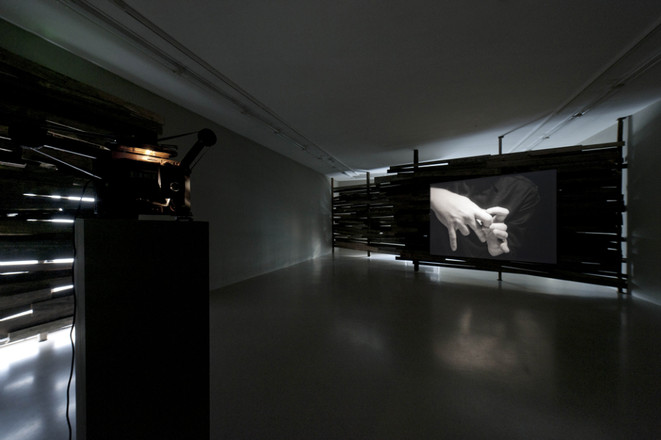Joachim Koester participated in Documenta 10 in Kassel (1997) and in the Venice Biennial (2005). He has had numerous solo and group exhibitions around the world. Recent monographic exhibitions were held at Museo Tamayo, Mexico City (2010), Kestnergesellschaft, Hanover(2010), Turker Art Museum, Finland (2009), Moderna Museet, Stockholm (2007) and in France, in particular at Frac Lorraine, Metz (2009), La Galerie, Noisy-le-Sec (2007) and the Centre National de la Photographie, Paris (2001).
The exhibition at the Institute assembles a large set of existing works, most of which were made since 2005, and new works, consisting mainly of films and photographs.
Joachim Koester has designed the exhibition like a pathway in half-light through a maze that fills all the space available. This exhibition is for him a matrix whose components (ideas, characters, subjects and emotions) weave links from one room to another.
Drawing on both the documentary and fiction, Joachim Koester’s work re-examines and reactivates certain forms from the past while paying attention to the questions of conscience and the fading of the senses. In a cinematographic spirit, he develops a recurrent principle of image editing to grasp a collective memory and perform both mental and geographic exploration. In this permanent investigation of the test of time and of erasure, Joachim Koester draws on the duality of the scientific relationship with the real and sensitive experience. Thus the representation as photo or film of places full of history and then deserted to which he turns often accomplishe this voluntary abolition of the frontiers between rationality and empiricism.
Message from Andrée (2005), corresponding to a turning point for Joachim Koester, is his first work to include a film with a flicker effect and whose documentary dimension is a pretext for a perceptual experiment. From there, the artist concentrated more and more on a quest for ‘spirits’.
Joachim Koester’s ‘ghost-hunting’ in his works to bring back forgotten people or places often involves occultism or rituals experimenting with different types of perception. Mention is made of Carlos Castaneda’s research on shamanism, places associated with black magic, outlaw communities and areas subjected to psychogeographic examination.
Within the framework of his interest in the exploration of an unknown mental world, the artist goes back to Henri Michaux’s drawings made under mescaline by making a ‘psychedelic’ film whose blinding effect is provided by flicker aesthetics. Joachim Koester’s recent works display the human body by creating a gestural language evoking in a minimal mode the question of trance, a body that is ‘inhabited’ as if possessed.
Variations of Incomplete Open Cubes is one of the new works that Joachim Koester has made for the exhibition at the Institute. Starting from one of Sol LeWitt’s minimalist sculptures, the artist has created a ‘dance for the hands’ and gives the body the role of ‘recording machine’.
Joachim Koester’s conceptual and experimental approach, with tension between rational and irrational, matches in part the research conducted by the IAC’s Laboratoire espace cerveau. Within this framework, the artist proposes as works to be studied Le rideau des rêves. Visions hypnagogiques presented by Yann Chateigné, art critic, exhibition curator and head of the Visual Arts Department at HEAD (Haute École d’Art et de Design), Geneva.


